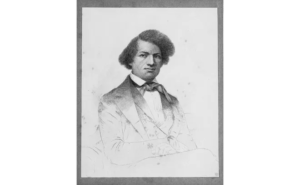X-rays determined that the woman was about 20 to 30 years old when she died, and the fetus was approximately 26 to 30 weeks old
History was made recently after researchers discovered that an Egyptian mummy, who, for decades, was believed to be a male, was actually a pregnant female.
The findings, which were published in a report last month in The Journal of Archaeological Science, mark the “only known case of an embalmed pregnant individual” in the history of the world.
Through their examinations, scientists were able to determine that the woman was between 20 and 30 years old when she died and the fetus was approximately 26 to 30 weeks old, according to the report.
“It’s like finding a treasure trove while you are picking up mushrooms in a forest,” Dr. Wojciech Ejsmond, an archaeologist and a director of the Warsaw Mummy Project, which led the research, told the New York Times. “We are overwhelmed with this discovery.”
Since 2015, Ejsmond and a team of researchers had been conducting a study of more than 40 mummies at the National Museum in Warsaw, Poland, according to the Times.
This particular mummy had been found in the royal tombs of Thebes, Upper Egypt, the report stated. At the time, it was “carefully mummified, wrapped in fabrics, and equipped with a rich set of amulets,” per the report.
In 1826, the mummy was donated to the University of Warsaw and later housed at the National Museum in Warsaw, according to the Times.
Centuries later, radiological exams were conducted, leading researchers to believe the mummy was male, the Times reported. Hieroglyphs on the coffin were also translated around that time to reveal the name of an Egyptian priest, Hor-Djehuty, according to the outlet.
Ejsmond told the Times that in recent months his team had been examining the mummy’s body again when they discovered it was not a male, as initially believed.
“It was absolutely unexpected,” Ejsmond explained to the outlet. “Our anthropologist was double-checking the pelvis area of the mummy to establish the sex of the mummy and check everything, and she observed something weird in the pelvis area, some kind of anomaly.”
That strange sighting in the pelvic area turned out to be a tiny leg of a fetus, according to the Times. Scientists then went on to conduct additional computer scans and x-rays to determine the mummy and fetus’ approximate age at their time of death, per the outlet.
According to their report, scientists believe the body dates back to the 1st century BCE.
At this time, it is unclear why the female mummy was allegedly in a male’s coffin.
Ejsmond noted to the Times that there have been previous occasions where the mummy did not match the coffin it was placed in, so they were more general about those findings in this report.
“One can only speculate that the mummy was placed in a wrong coffin by accident in ancient times, or was put into a random coffin by antiquity dealers in the 19th century,” the report states, according to the Times.
With the historic discovery, researchers stated in the report that they are now hoping this will open “new possibilities” about researching pregnancy and maternity practices in ancient times, as not much is currently known.
“This mummy provides new possibilities for pregnancy studies in ancient times, which can be compared with and related to current cases,” the report stated. “Furthermore, this specimen sheds a light on an unresearched aspect of ancient Egyptian burial customs and interpretations of pregnancy in the context of ancient Egyptian religion.”




